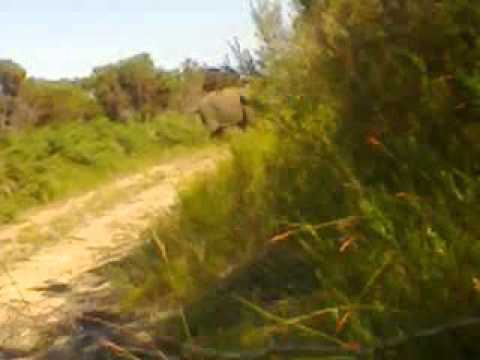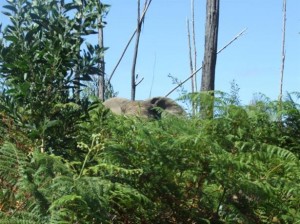
Oupoot the Knysna elephant has made her appearance again.
Nandi Mgwadlamba, spokesperson for SANParks, said the elephant was first spotted two weeks ago by Siviwe Nondobo, one of SANParks rangers, who was out to collect dung samples for their scientist Lizette Moolman van der Vyver working on the Knysna elephant and other terrestrial mammals.
“On his way there, he first saw a caracal and then later Oupoot herself.”
Field workers from Mountain to Ocean then also saw the elephant on Wednesday, March 9 and took pictures and a video of her.
”SANParks’ confirmation of the presence of one elephant in the Knysna forest does not mean the others are not there. It is suspected there are between one and five elephants. The location of their whereabouts cannot be disclosed.”
Mgwadlamba explained that SANParks’ monitoring techniques are nonintrusive and involve gathering data on, for example, dung circumference, feeding signs and also taking dung samples for elephant hormone studies.
“The hormone studies are aimed at determining the reproductive potential of individuals in the group as well as assessing the level of stress hormones released when the elephants move through certain areas.
Video of Oupoot the Knysna elephant
“The estimated 1 000 elephants that historically roamed the Outeniqua/Tsitsikamma area most certainly played an ecological role. Data on – and therefore an understanding of – the ecological role of elephants and their potential impact on biodiversity in the Southern Cape are sparse, and the few scientific studies that were conducted took place after the elephants were confined to the forest habitat.
“It is believed that the historical Southern Cape elephant population’s range was confined to the forest parts around Knysna as a result of human settlement and agricultural development. The Knysna elephants may therefore have been cut off from other habitat types that they historically visited over a century ago.”
“The absence of elephants in these habitats today may carry negative consequences for the elephants’ forage needs and for biodiversity.
“A popular belief that the Knysna elephants are genetically unique, was challenged by recent studies showing that these elephants once belonged to a larger, continuous Southern African population, of the same subspecies as the African elephant, Loxodonta africana. These elephants’ genetic uniqueness, or rather lack thereof, has been used by some as a measurement of their conservation value.
“Basing elephants’ conservation value on their genetic status alone, however, ignores their potential role as an ecological role-player.
“Elephants are a ‘keystone species’, essential for the integrity of the ecosystem. Elephants affect ecological processes through their feeding, digging and movement, and contribute to biopersity by dispersing seeds, opening thickets, making browse more available to smaller herbivores, making water accessible in dry river beds, and promoting nutrient recycling.”














